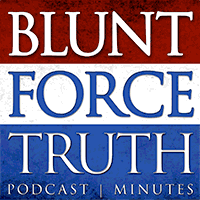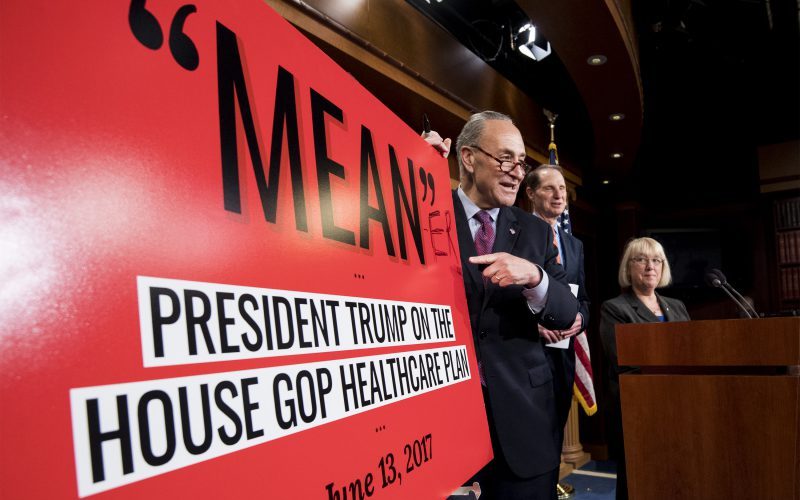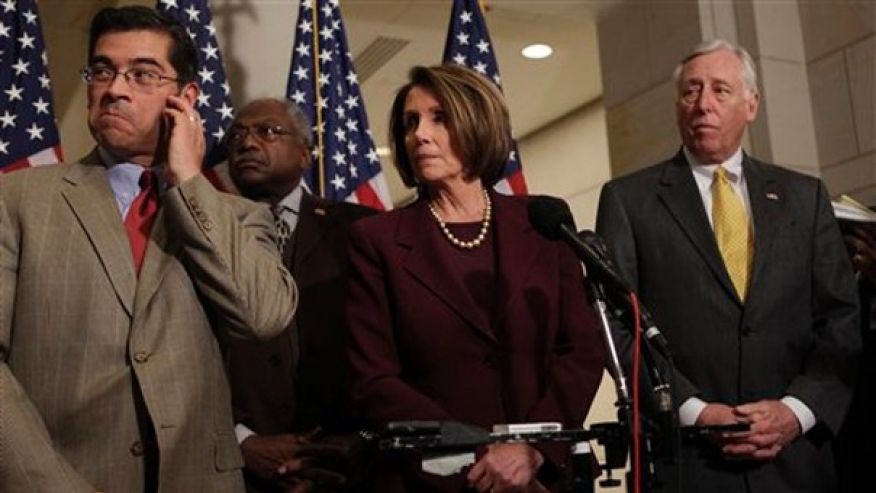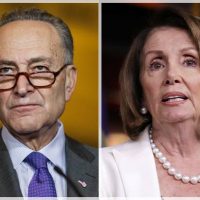Another health-care bill, another pack of senators holding the nation hostage until they get special treatment.
Buried within the pages of the revised Senate health-care bill are numerous formula tweaks meant to advantage certain states. Call them backroom deals, call them earmarks, call them whatever you like: several provisions were inserted into the bill over the past two weeks with the intent of appealing to certain constituents.
It appears that at least three of these provisions apply to Alaska—home of wavering Sen. Lisa Murkowski (R-AK)—and another applies to Louisiana, home of undecided Sen. Bill Cassidy (R-LA). Below please find a summary (not necessarily exhaustive) of these targeted provisions.
The Buy Off Lisa Murkowski Again Fund
Section 106 of the bill includes new language—page 13, lines 4 through 13, and page 18, line 12 through page 19, line 4—dedicating one percent of the new Stability Fund dollars to “each state where the cost of insurance premiums are at least 75 percent higher than the national average.” As a Bloomberg story noted, this provision currently applies only to Alaska, and could result in $1.32 billion in Stability Fund dollars automatically being directed to Alaska.
The Alaskan Pipeline
The revised Section 126 of the bill includes modified language—page 44, lines 9 through 17—changing certain Medicaid payments to hospitals based on a state’s overall uninsured population, not its Medicaid enrollment. As Bloomberg noted, this provision would also benefit Alaska, because Alaska recently expanded its Medicaid program, and therefore would qualify for fewer dollars under the formula in the original base bill.
The Moral Hazard Expansion
The underlying bill determined Medicaid per capita caps based on eight consecutive fiscal quarters—i.e., two years—of Medicaid spending. However, the revised bill includes language beginning on line 6 of page 59 that would allow “late expanding Medicaid states”—defined as those who expanded between and July 1, 2015 and September 30, 2016—to base their spending on only four consecutive quarters. Relevant states who qualify under this definition include Alaska (expanded effective September 1, 2015), Montana (expanded effective January 1, 2016), and Louisiana (expanded effective July 1, 2016).
The most recent actuarial report on Medicaid noted that, while the actuary originally predicted that adults in the expansion population would cost less than existing populations, in reality each newly eligible enrollee cost 13.6 percent more than existing populations in 2016. Some states have used the 100 percent federal match for their expansion populations—i.e., “free money from Washington”—to raise provider reimbursement levels. Therefore, allowing these three states to use only the quarters under which they had expanded Medicaid as their “base period” will likely allow them to draw down higher payments from Washington in perpetuity.
The South Dakota Purchase
The revised bill includes a new Section 138, which makes services provided by a state to Indian Health Service enrollees subject to a 100 percent federal Medicaid match. Under current law, only services “received through an Indian Health Service facility whether operated by the Indian Health Service or by an Indian tribe or tribal organization” are subject to a 100 percent match. South Dakota Gov. Dennis Daugaard has pushed this provision for over a year, saying he would expand Medicaid under Obamacare—but only if the federal government would agree to provide a 100 percent reimbursement for all Medicaid services provided to Indian Health Service enrollees.
The Buffalo Bribe
This provision, originally included in the House-passed bill, remains in the Senate version, beginning at line 12 of page 69. Originally dubbed the “Buffalo Bribe,” and inserted at the behest of congressmen from upstate New York, the provision would essentially penalize that state if it continues to require counties to contribute to the Medicaid program’s costs.
More to Come?
While the current bill contains at least half a dozen targeted provisions, many more could be on the way. By removing repeal of the net investment tax and Medicare “high-income” tax, the bill retains over $230 billion in revenue. Yet the revised bill spends far less than that—$70 billion more for the Stability Fund, $43 billion more in opioid funding, and a new $8 billion demonstration project for home and community-based services in Medicaid.
Even after the added revenue loss from additional health savings account incentives, Senate leadership could have roughly $100 billion more to spend in their revised bill draft—which of course they will. Recall too that the original Senate bill allowed for nearly $200 billion in “candy” to distribute to persuade wayward lawmakers. In both number and dollar amount, the number of “deals” to date may dwarf what’s to come.
(First reported by The Federalist)http://thefederalist.com/2017/07/14/5-backroom-deals-inside-latest-senate-health-care-bill/ (July 14, 2017)
Want more BFT? Leave us a voicemail on our page or follow us on Twitter @BFT_Podcast and Facebook @BluntForceTruthPodcast. We want to hear from you! There’s no better place to get the #BluntForceTruth.








